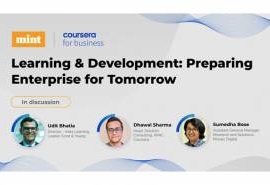The jobs sphere has been trending towards disruption, upheaval, and accelerated change as more and more employers are beginning to welcome skills-based hiring processes.
The impact of the coronavirus pandemic, ongoing recession, great attrition, and job automation have driven organizations to reexamine their outlook on human resources and talent management. From employing new, nontraditional talent to developing superior training strategies for enduring professional development- the approach is key for assisting organizations to create and support a more inclusive workforce.
Despite the commitment to a skills-based approach, blockades have barred them from being more broadly accepted. Employers may comprehend how to accomplish “fast wins” but feel less confident about how to exercise the practices widely or sustainably. Here are some common challenges faced when implementing a skills-based approach.
Make your inbox more interesting.
Subscribe to our newsletterChallenges
1. Finding the Right Path through Uncharted Territory
It is becoming evident that for most working individuals, the extent of the functioning tasks they presently perform will be either totally replaced by machines or augmented by a human-machine interface.
Thus, one of the biggest challenges is the accelerating shift in the distribution of jobs and how quickly top skills are shifting for jobs overall. Workforce skills need to evolve, whether it’s because of industry shifts or the acceleration of skill replacement within a job. The need is urgent, and the speed of implementation is crucial.
2. Sourcing and Skilling takes Time
Sourcing and scaling are the challenges of the moment for learning leaders everywhere. Recruiting the best is not a simple task to accomplish, especially when you are employing at scale. Organizations that hire at scale normally put in significant time and energy in job boards, online platforms, and internal or external recruiters to source talent. As it turns out, the time constraints considerably amplify the intricacy of the hiring equation.
3. Skills-gap Training is not an Easy Proposition
Overcoming the gap between employees’ existing capabilities and the skills needed to flourish is testing. For instance, many workers from their original jobs can come in with strong foundational skills, such as client service, but they still expect training to learn occupation-specific abilities and there is no fast method to teach those to them.
4. Validating Skills pinpoints Hiring Challenges
Hiring managers sometimes feel uncertain of how to decide which jobs could deliver the finest candidates and how to communicate the opportunities accessible at their firms to these workers. Though they are assertive about their strength to withdraw degree requirements, they lacked enough confidence in designing appropriate and helpful methods for validating an aspirant’s proficiency in specific skills through interview questions or assessments.
5. Learning Leaders Face High Expectations
In the face of skill shifts, the expectations for learning leaders have become higher. They are charged with building meaningful, impactful learning programs that drive business outcomes, demonstrate the ROI, and close critical skill gaps.
However, a lack of data, whether through lack of access or not having data at all, creates a problem. As learning leaders try to bring together cross-functional teams to drive skills planning, they are forced to lean on their instincts to guide critical skills development decisions.
Overcoming the Barriers
As organizations revisit their talent strategy, there’s an opportunity to find new solutions to complex problems. As per the Burning Glass Institute and Coursera’s Skills Compass Report, the skills can fall into five following distinct categories that demonstrate the most effective tactical approach learning leaders can take when building skill development programs.
1. Solid Investment
Skills: Software Development, Algorithms, Programming Languages, Big Data, Agile Methodology, etc.
While the cost and time it takes to acquire these skills are going to be high, their longevity is also high. These are the skills that are ripe for reskilling and redeploying talent for the long term.
Operationalizing them through formal development programs and being selective about the timing and selection of learning opportunities will help organizations properly prioritize.
2. Quick Dividends
Skills: Negotiation, Budgeting, Salesforce, Data Structures, etc
These skills still have medium to high longevity like Solid Investment skills, but skills in this category are also unique because they are often less expensive to learn than they are to hire for. Having on-demand access to growing these skills helps build the appropriate business mindset.
3. Enduring
Skills: Teamwork, Public Relations, Critical Thinking, Problem-Solving, etc
They are foundational and critical to interpersonal skills that are built over, and last for, an employee’s entire career. Given the importance of these skills, measurement and refreshing training ensure they stay strong
4. Adaptive
Skills: DevOps, Data Architecture, Machine Learning, Artificial Intelligence, etc
While these skills are costly, they also require constant attention and updates for learners. Even if an organization hires people with these skills, they need to stay up to date.
Learning academies, where people can dive deep into the latest and greatest skills in data and technology, are the best place to invest.
5. Commodity
Skills: Web Development, Database Design, HTML, Data Mining, etc
Commodity skills are often widely acquired and inexpensive to obtain through hiring. Historically, these are skills that have been around for many years and are adopted on a widespread basis.
These skills are typically for entry-level roles or, if needed, upskilled alongside other complementary skills when necessary.
Knowing whether a skill falls into which category gives learning leaders a framework to make proactive decisions when it comes to upskilling or reskilling their people.
Conclusion
In the face of ongoing macroeconomic difficulties, right now is an ideal opportunity for all stakeholders in workforce development to dedicate resources and support to fast-track the adoption of these practices and create more equitable growth in communities.



